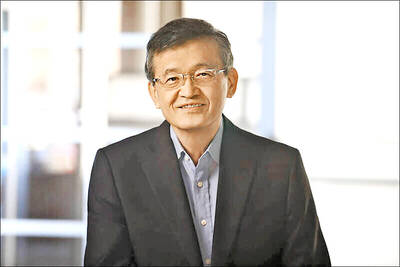The US Department of Commerce yesterday said that it had finalized a US$123 million grant for Polar Semiconductor LLC to expand its plant in Minnesota, which would allow the company to nearly double its US production capacity of power and sensor chips.
The award, part of a US$52.7 billion semiconductor manufacturing and research subsidy program, is the first in the program to be finalized by the Commerce Department.
The department would distribute funds based on Polar’s completion of project milestones.

Photo: Reuters
US Secretary of Commerce Gina Raimondo said that the award would help “create a new US-owned foundry for sensor and power semiconductors” and boost Polar production from roughly 20,000 wafers per month to 40,000 serving aerospace, automotive and defense needs.
The state of Minnesota is contributing US$75 million to the US$525 million expansion at Polar, which is 70 percent owned by Sanken Electric Co and 30 percent held by Allegro MicroSystems Inc.
The department has allocated more than US$35 billion for 26 projects, including US$6.4 billion in grants to Samsung Electric Co to expand chip production in Texas, US$8.5 billion for Intel Corp, US$6.6 billion for Taiwan Semiconductor Manufacturing Co (台積電) to build out its US production and US$6.1 billion for Micron Technology Inc to fund US factories.
The department must complete due diligence before it can finalize awards.
“You’re going to start to see more awards like this, dollars to companies in the coming weeks and months,” Raimondo said.
The 2022 CHIPS and Science Act championed by the administration of US President Joe Biden aims to boost efforts to make the US more competitive with China and dramatically expand US chips production. The law also includes a 25 percent investment tax credit for building chip plants, estimated to be worth US$24 billion.
Separately, the US Congress on Monday gave final approval to legislation that would streamline federal permitting processes for semiconductor manufacturing projects.

Intel Corp chief executive officer Lip-Bu Tan (陳立武) is expected to meet with Taiwanese suppliers next month in conjunction with the opening of the Computex Taipei trade show, supply chain sources said on Monday. The visit, the first for Tan to Taiwan since assuming his new post last month, would be aimed at enhancing Intel’s ties with suppliers in Taiwan as he attempts to help turn around the struggling US chipmaker, the sources said. Tan is to hold a banquet to celebrate Intel’s 40-year presence in Taiwan before Computex opens on May 20 and invite dozens of Taiwanese suppliers to exchange views

Application-specific integrated circuit designer Faraday Technology Corp (智原) yesterday said that although revenue this quarter would decline 30 percent from last quarter, it retained its full-year forecast of revenue growth of 100 percent. The company attributed the quarterly drop to a slowdown in customers’ production of chips using Faraday’s advanced packaging technology. The company is still confident about its revenue growth this year, given its strong “design-win” — or the projects it won to help customers design their chips, Faraday president Steve Wang (王國雍) told an online earnings conference. “The design-win this year is better than we expected. We believe we will win

Quanta Computer Inc (廣達) chairman Barry Lam (林百里) is expected to share his views about the artificial intelligence (AI) industry’s prospects during his speech at the company’s 37th anniversary ceremony, as AI servers have become a new growth engine for the equipment manufacturing service provider. Lam’s speech is much anticipated, as Quanta has risen as one of the world’s major AI server suppliers. The company reported a 30 percent year-on-year growth in consolidated revenue to NT$1.41 trillion (US$43.35 billion) last year, thanks to fast-growing demand for servers, especially those with AI capabilities. The company told investors in November last year that

Power supply and electronic components maker Delta Electronics Inc (台達電) yesterday said it plans to ship its new 1 megawatt charging systems for electric trucks and buses in the first half of next year at the earliest. The new charging piles, which deliver up to 1 megawatt of charging power, are designed for heavy-duty electric vehicles, and support a maximum current of 1,500 amperes and output of 1,250 volts, Delta said in a news release. “If everything goes smoothly, we could begin shipping those new charging systems as early as in the first half of next year,” a company official said. The new